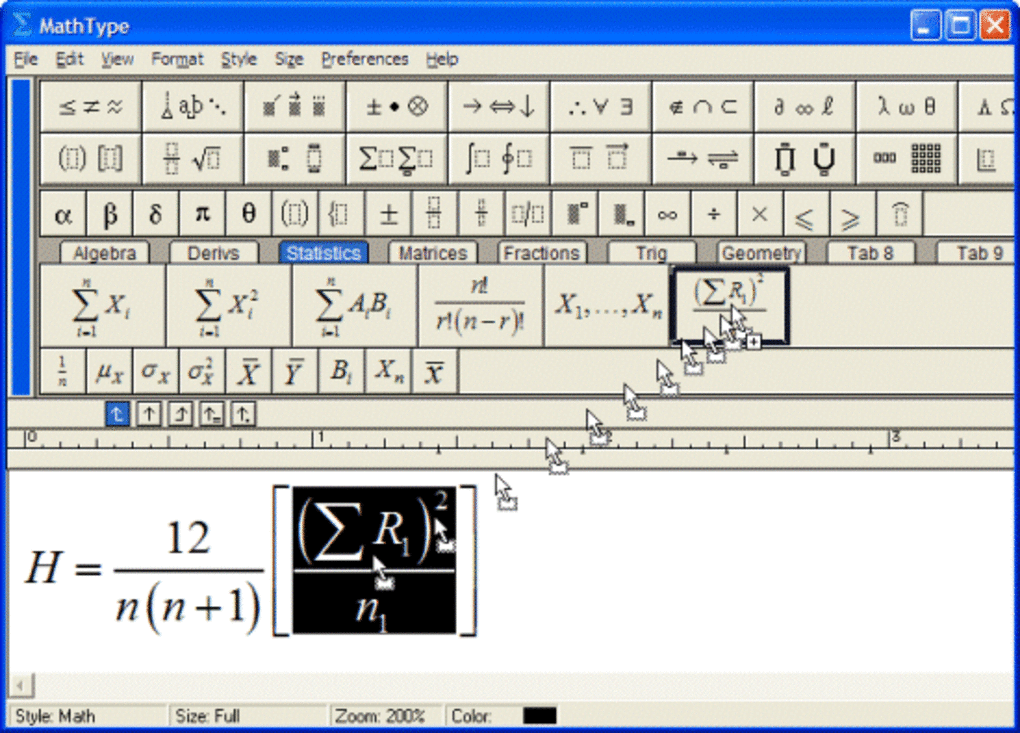
- #Install microsoft equation 3.0 word 2013 how to#
- #Install microsoft equation 3.0 word 2013 install#
- #Install microsoft equation 3.0 word 2013 software#
- #Install microsoft equation 3.0 word 2013 code#
Will I be able to edit Equation Editor equations with MathType?Yes, MathType can understand and edit Equation Editor equations in your existing documents. MathType's fonts will remain installed, so equations will still display and print. Once the trial is over, the MathType editor will not be available for editing equations.
#Install microsoft equation 3.0 word 2013 install#
In case they need to edit the equations, they should download and install our free MathType 30-day trial, and they will be able to edit your equations during the trial period. Will others who don't use MathType be able to read or edit my equations?You may want to send documents containing MathType equations to other people so they can view, print, or even edit them.
#Install microsoft equation 3.0 word 2013 software#
Even if the software on your computer no longer includes Equation Editor, you or your colleagues may still have documents that contain equations created with Equation Editor. It is not included with Microsoft Office any longer, but you may still have it if you have not updated your copy of Microsoft Office or if you have other applications that include Equation Editor.

You can always recover them from your personal area at MY WIRIS STORE.Įquation Editor (aka 'Microsoft Equation 3.0' and other names) was included with Microsoft Office and other products for many years. MathType licenses Where do I find my license key?Your license keys for MathType 7 are included in the email you receive after purchasing. With MathType the equations do require the MathType fonts to remain installed though, so take care not to remove any font with the name Euclid in it, nor the font MT Extra. The only difference you'll notice is you'll no longer be able to make changes to these equations. What happens with MathType documents when my trial expires?The equations in documents you create during the trial remain readable and unchanged after your trial expires. One thing you cannot do after your trial expires is create or edit equations. Three, if you're in Word you can convert the equation to a Word equation editor (OMML) equation. Two, you can copy them as LaTeX or MathML or a site-specific format (such as WordPress and many others). One, you can view and print the equations. What can I do after the 30-day trial expires?There are 3 things you can do with an expired trial.


There are no restrictions or limitations other than the time limit of 30 days. What can I do with MathType during the 30-day trial?During your MathType trial period, you can do the same things as you can with a fully-registered copy of MathType. '>here isī) to check if there is equation in your cell: If (1).Cell(r,c). > 0 Then.
#Install microsoft equation 3.0 word 2013 code#
To use this solution within your code you could implement it in few possible ways:Ī) to check if there is any equation in the table: If (1). > 0 Then. Unfortunately, I have no experience in this area. You could try normalize your equation referring to some properties of OMathFunction Object. RowNo = (wdEndOfRangeRowNumber)ĬolNo = (wdEndOfRangeColumnNumber)

#Install microsoft equation 3.0 word 2013 how to#
'**EDIT** how to get row and column number of this cell: 'if there is any equation this if statement will return true If you are running Word 2010 (possibly 2007) you could check if there is an equation in the cell in this way (this is complete loop for each cell in table which you can easily convert to your needs, Word-VBA code, tried and tested for Word 2010): Dim eqCell As Cellįor Each eqCell In ActiveDocument.Tables(1).Range.Cells Is there an easy way to bypass the cell with the equation in it? The error when I run into the equation is 'The requested member does not exist.' Xl = ('Excel.Application')įor x in xrange(1, +1):įor r in xrange(1, (1).Rows.Count):įor c in xrange(1, (1).Columns.Count): My current code for reading the table is this: word = ('Word.Application') If not, does somebody know how I can identify the equation to bypass it? Is there some way of normalizing the equations in Word into text? I am currently trying to read the text from the table and create an Excel sheet with the same table. I have a table in Word filled with different texts, and some equations using Microsoft Equation 3.0.


 0 kommentar(er)
0 kommentar(er)
